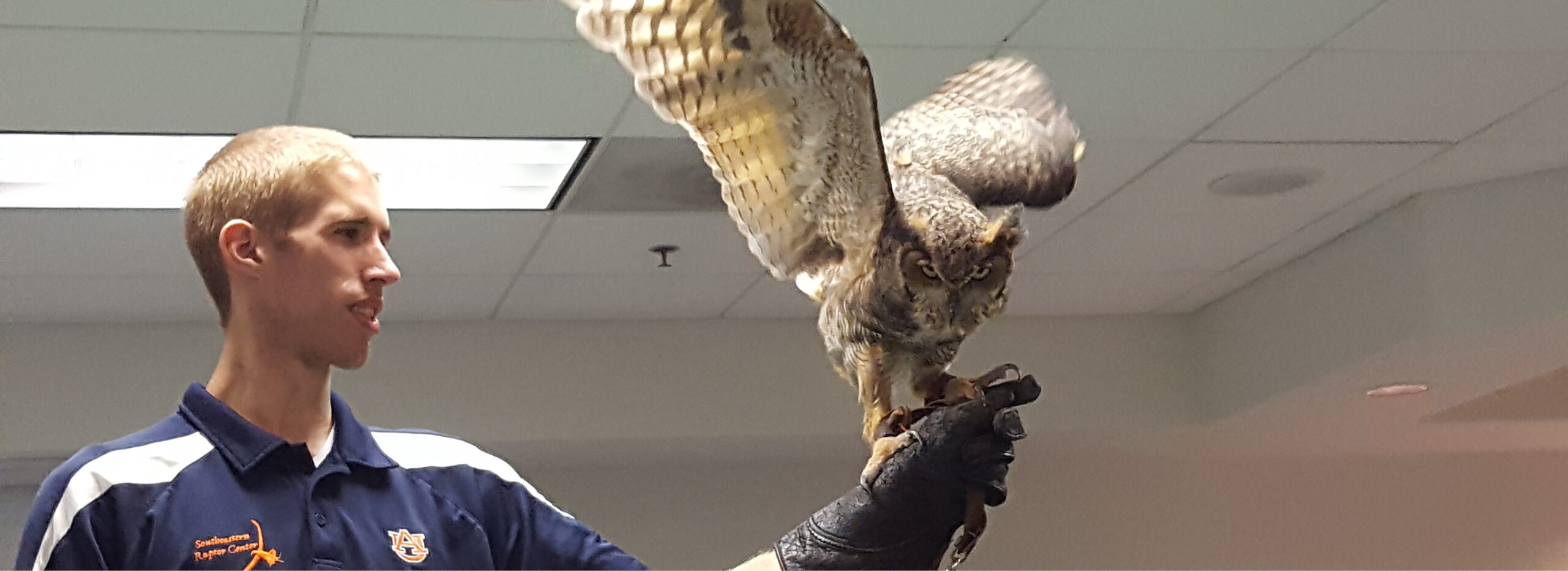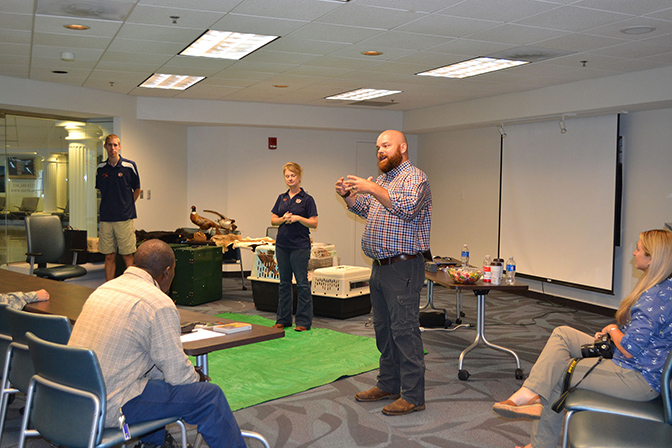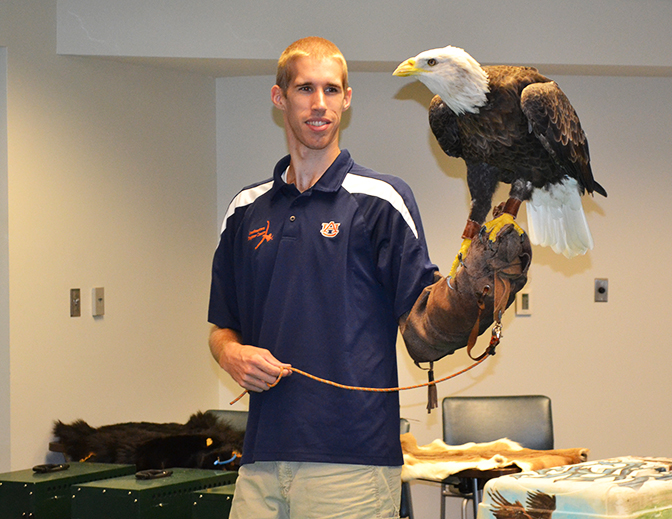

GMC and Environmental Science Associates (ESA) partnered with the Southeastern Raptor Center at Auburn University to provide Wildlife Hazard Management Training for the staff at Montgomery Regional Airport on July 26 and 27, 2016. The training was led by Qualified Airport Wildlife Biologists Jof Mehaffey and Rob Carlton of GMC and Jessie Wheeler of ESA. The program is designed to reduce the potential for collisions between wildlife and aircraft, commonly referred to as bird strikes or wildlife strikes, and to improve safety at the airport and surrounding areas by educating and providing resources to the staff tasked with conducting wildlife hazard management.
The Southeastern Raptor Center provided educational demonstrations with live birds of prey that are native to Alabama and commonly found in the Montgomery area. Raptors showcased included the barn owl, barred owl, great horned owl, red-tailed hawk, American kestrel, turkey vulture and bald eagle. This interactive learning experience provided airport personnel with a greater knowledge of the specific life cycles and habitat requirements of these and other species and will help further efforts to minimize their incidence at the airfield.
The training is the third and final phase of a wildlife hazard management program initiated by Montgomery Regional Airport in 2013. The first phase of the program, the Wildlife Hazard Assessment (WHA), consisted of a yearlong study to identify the types of wildlife species, their numbers and frequency in and around the airport complex. GMC and ESA completed the assessment in 2014, which also evaluated the existence of potential habitats and food sources on or near the airport property that may appeal to wildlife.

The second phase involved collaboration among the wildlife biologists who conducted the WHA and airport personnel to produce a Wildlife Hazard Management Plan. This plan incorporates a variety of methods, including land management strategies, habitat modifications, and wildlife deterrents to minimize the appeal of the airport facility to birds and other wildlife identified in the WHA to help maintain the safety of both the animals and aircraft. Montgomery Regional’s Wildlife Hazard Management Plan was accepted for implementation by the Federal Aviation Administration (FAA) in the spring of 2016.
The training will not only help ensure the activities described in the Wildlife Hazard Management Plan are carried out effectively, but also promotes awareness of the potential risks of wildlife hazards at airports.
For additional information on wildlife hazard management, contact Jof Mehaffey or Rob Carlton.